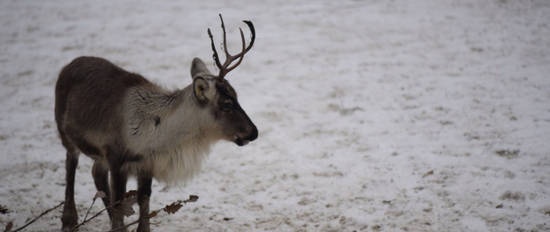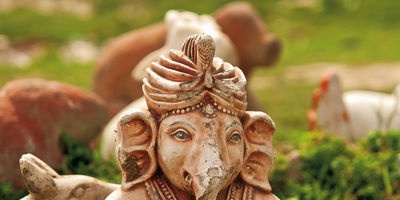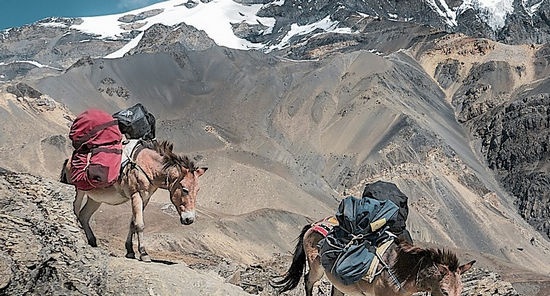Traveling through calendars |
|
Potatoes played a primary role in the life of the ancient Peruvians. It is not surprising that this plant has been the subject of religious worship. In everyday life among the Incas, the daily time was measured by a unit equal to ... the duration of boiling the tubers. "Potato" the unit of time was slightly less than our usual hour. Potatoes - a plant, and there were also clocks named after animals. In ancient China, the day was divided into 12 double hours, each of which bore the name of a constellation of the zodiac. For example, the time from 23 to 1 hour was indicated by the hieroglyph "Tzu" ("mouse"), from 1 to 3 hours - "Chow" ("ox"), from 21 to 23 hours - "Hi" ("pig")... There were also hours: "Tiger", "hare", "dragon", "snake", "horse", "ram", "monkey", "rooster", "dog"... Imagine: a young man makes a date with a girl at the hour of the rooster; or such a phrase: "What a paradise has risen, the tiger is not over yet, it is far from the hare."
In general, it should be noted that the ancient Chinese zodiac formed the basis of the entire so-called cyclic calendar. The twelve animals were hieroglyphic not only for double clocks; some of them were also used to indicate the cardinal points: north - "Tzu" ("mouse"), south - "Y" ("horse"), west - "Yu" ("rooster"), east— "Mao" ("hare")... The corresponding hieroglyphs were also designated for twelve months of the year. The calendar used by our ancestors, the Slavs, reflected seasonal changes in nature (for example, April - birch, at the beginning of birch flowering) or the alternation of the most important agricultural works (February - cut, the season of forest felling; July - serpent, harvest time). Interestingly, the old names of the months have been partially preserved in a number of Slavic languages (Czech, Polish) to this day. Ukrainians and Belarusians also continue to call May - travnem, October - leaf fall, etc.
The folk calendar contained much more phenological signs. Even the introduction of Christianity in Russia and the transition to the Roman calendar system borrowed through Byzantium did not prevent Russian peasants from being guided in everyday life by natural landmarks, proven by many years of practice. The "holy saints" distributed on calendar days played a rather amusing role in this. The peasants gave them “production” nicknames. So, March 4 (hereinafter - dates according to the old style) was the day of Gerasim Grachevnik: at this time the harbingers of spring arrive - rooks. In March, but at the end of the month, "on Matryona" - "the pike breaks the ice with its tail." Since the day of Lukerya Komarnitsa (May 13), mosquitoes begin to bother. Saint Nikita (September 15) was nicknamed Guseprolet, and Orina (September 18) - Crane Letters. Zosima and Savvaty were considered patrons of bees, bees: "To Zosima" (April 17) it was supposed to place hives, and "on Savvaty" (September 27) - to remove them.Day October 29 - Avramiy Ovchar and Anastasia Ovechnitsa - was celebrated as a holiday by everyone who was involved in caring for sheep.
The creation of the calendar by the Maya Indians dates back to the first centuries of our era. It was based on the division of the year into seasons of agricultural work. And in the Aztec solar calendar, even the days of the 20-day month each had their own name, including: "Alligator", "lizard", "snake", "deer", "rabbit"," Dog "," monkey "," ocelot "," eagle "," vulture ". It is quite natural that the calendars of nationalities had their own specific bias, in which not agriculture was more developed, but cattle breeding or hunting and fishing. Scythian cattle breeders called May "otamaly", which means "grazing cattle" There were also months of cutting thick wool and the end of milk nutrition in their calendar :: this last Scythians said goodbye until next year "with kumis, ayran and shubat, leaving for the winter only the hardened prepared for future use cottage cheese. The Nganasans called the period from June 15 to July 15 the month of appearance fish, from July 15 to August 15 - the month of geese, from August 15 to September 15 - the month of goose chicks. Our March and April included the month burbot the Dolgans.
From time immemorial, the half-meter sea worm palolo has been a welcome delicacy for the indigenous population of the Pacific islands of Samoa, Fiji, Tonga. Usually, these worms hide in the crevices of the reef all year round, growing a tail cavity filled with eggs or milk... And only once a year, at a strictly defined time, this tail part, having separated, floats to the surface of the ocean. Here it breaks into pieces. During the period of massive swarming of Palolo, seawater takes on an opal color for many miles in circumference. A real holiday is coming for the natives; Hundreds of boats head to the swarming area. With special nets, people scoop out a brown-green mass from the surface, which then goes into food either raw or pre-fried. We must assume that the taste of this exotic food is really good. It is not without reason that in the old days the year began among the Samoans precisely from the moment of the mass move of the palolo. The Chinese cyclic calendar has already been discussed. Let's tell you more about it. Five 12-year cycles are combined in this calendar into a 60-year circle. Why exactly five? Ancient thinkers believed that all living and inanimate objects consist of material primary elements (elements): earth, water, fire, metal, wood. Their relationship was revealed in a figurative form as follows: the earth gives rise to water, water extinguishes fire, fire melts metal, metal cuts wood, wood grows from the earth. As we can see, there is a theory of the eternal and endless cycle in nature. These five elements correspond to five cardinal points (the fifth is the so-called "center"), five different colors (white, black, red, blue, yellow) and five taste sensations (bitter, sweet, sour, salty, pungent). As for the other counting unit of the calendar, the number 12, it (as mentioned earlier) was determined by the number of zodiacal constellations that gave names to the years of the cycle. Krasnopevtsev V.P. - Seagulls on a pedestal |
| Hamadrils: sounds, facial expressions, gestures | Animals on a geographical map |
|---|
New recipes
 The prehistoric city of the Tiahuanaco Indians, located in the Andes at a four-kilometer height, has asked scientists many mysteries. Among them was the original calendar, which was only recently deciphered. Days and nights are depicted in this calendar by the heads of condors and cougars carved in stone: condors are known to be daytime birds, and cougars are known to hunt exclusively at night.
The prehistoric city of the Tiahuanaco Indians, located in the Andes at a four-kilometer height, has asked scientists many mysteries. Among them was the original calendar, which was only recently deciphered. Days and nights are depicted in this calendar by the heads of condors and cougars carved in stone: condors are known to be daytime birds, and cougars are known to hunt exclusively at night. The same hieroglyphs represent the time of day in China today. Just for the sake of greater accuracy, additional signs are added to them: "chu" - for the first half and "Zheng" - for the second half of a double hour.
The same hieroglyphs represent the time of day in China today. Just for the sake of greater accuracy, additional signs are added to them: "chu" - for the first half and "Zheng" - for the second half of a double hour. For us in this case, of particular interest is the fact that in the calendar of the Slavs there were two months named after animals: izok ("grasshopper"), corresponding to June, and worm (June or July: at this time, crimson, "scarlet" paint from insect worms).
For us in this case, of particular interest is the fact that in the calendar of the Slavs there were two months named after animals: izok ("grasshopper"), corresponding to June, and worm (June or July: at this time, crimson, "scarlet" paint from insect worms). A calendar based on seasonal changes in animal behavior is easy to create for any climate zone. When applied to our middle zone, it could, for example, look something like this: March is the month of arrival of rooks and starlings; April is the month of arrival of larks, or the beginning of the rumbling of frogs, or the first crow of the cuckoo; May is the month of the first song of the nightingale, or the departure of May beetles, or the appearance of dung beetles, etc., etc.
A calendar based on seasonal changes in animal behavior is easy to create for any climate zone. When applied to our middle zone, it could, for example, look something like this: March is the month of arrival of rooks and starlings; April is the month of arrival of larks, or the beginning of the rumbling of frogs, or the first crow of the cuckoo; May is the month of the first song of the nightingale, or the departure of May beetles, or the appearance of dung beetles, etc., etc. Evenk reindeer herders have months: when the reindeer peels the skin from the horns, calving, etc .; for Evenks from the banks of the Amur - the arrival of chum salmon, spawning; The Okhotsk Evenks call the first month of hunting sable and squirrel "Gobchonbega", which means "Let's go hunting".
Evenk reindeer herders have months: when the reindeer peels the skin from the horns, calving, etc .; for Evenks from the banks of the Amur - the arrival of chum salmon, spawning; The Okhotsk Evenks call the first month of hunting sable and squirrel "Gobchonbega", which means "Let's go hunting".









